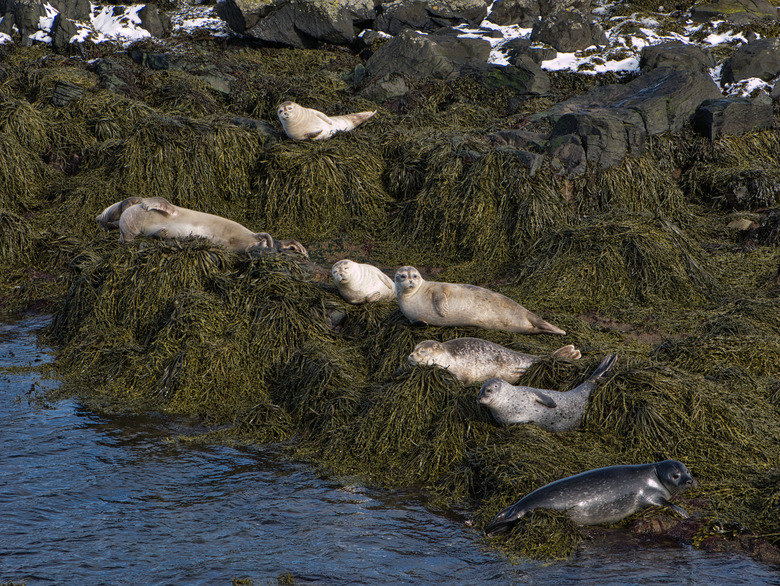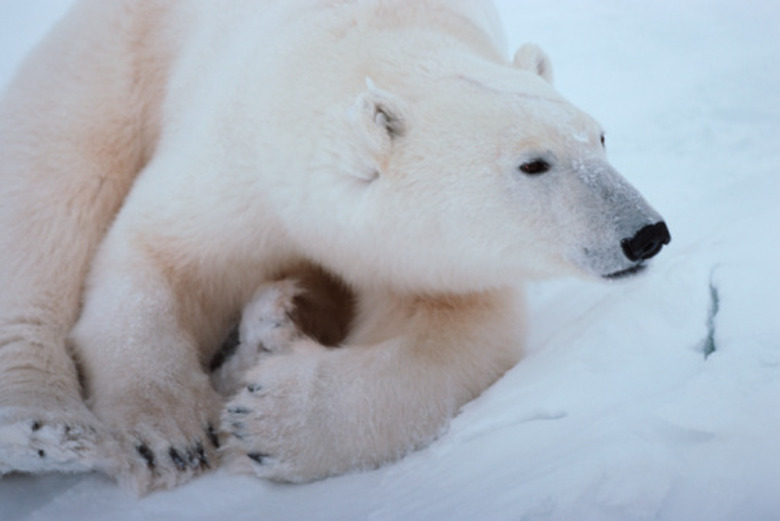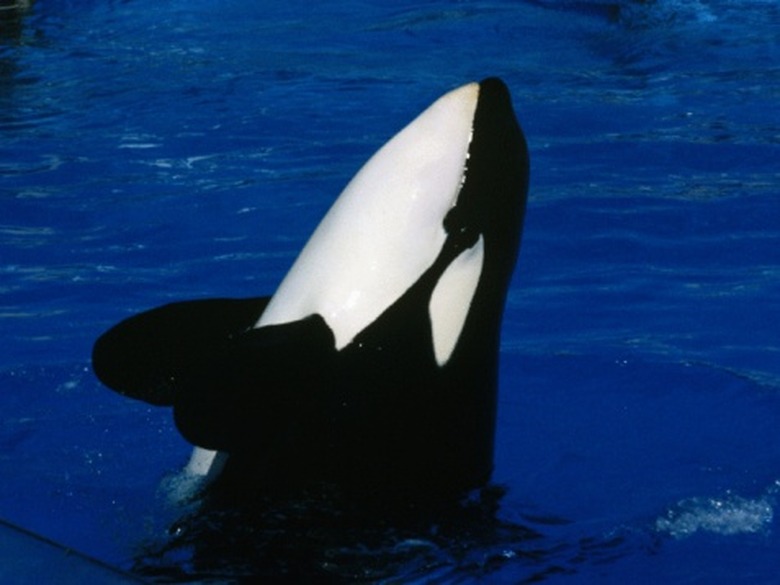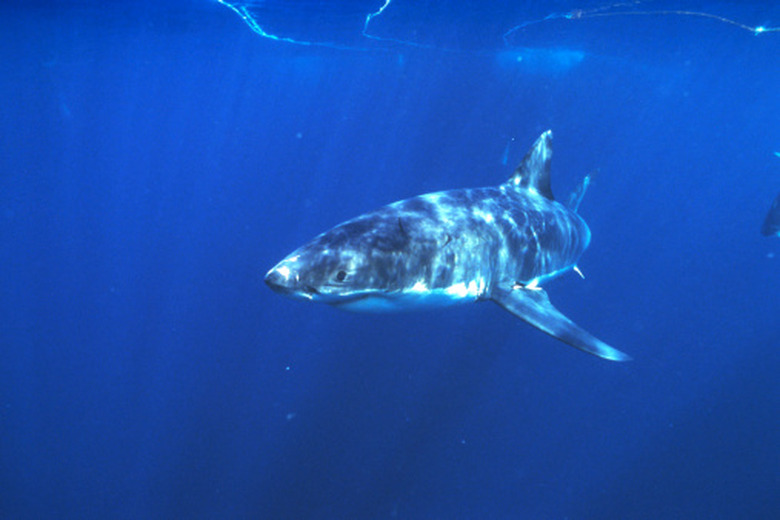What Eats Harp Seals?
The harp seal is a type of Arctic ice seal that shares its habitat with foxes, wolves, dogs, wolverines and large birds. While many of these animals have been known to prey on the region's seals, the harp seal has just four main enemies: polar bears, killer whales, sharks and humans.
Polar Bears
Polar Bears
Seals are polar bears' predominant food source. Because harp seals are much better swimmers than polar bears, the bears hunt them as they are resting on the surface of the ice. The bears prefer to eat the seals' blubber rather than their meat. A slow melt of the polar ice caps in recent years continues to isolate the bears' habitat and threatens their ability to find and hunt harp seals. As a result, polar bears are less of a threat to seals than in decades past.
Killer Whales
Killer Whales
Killer whales, or orcas, prey on a variety of oceanic species, including fish, squid, sea lions, penguins, dolphins, porpoises, other whales and seals such as the harp seal. While families of whales, called pods, that live in a particular area are more likely to eat fish, transient pods often target larger marine mammals. Killer whales are cooperative hunters, and often work together to secure a kill. The whales' excellent hearing and vision in and out of the water aid in their ability to hunt the seals.
Sharks
Shark species native to Arctic waters are yet another threat to harp seals and their pups. Though data is scarce, shark species responsible for seal attacks likely include great white, tiger, mako and Greenland sharks. Like killer whales, sharks are accomplished predators, fast enough to catch seals in the water and perhaps pick them off the edge of the ice. Unlike the whales, however, sharks rarely hunt in packs.
Humans
Humans
Humans continue to be the main threat to harp seals, both through the depletion of their sea-ice habitat and through hunting, boat strikes, entanglement in fishing gear, oil spills and general harassment. An annual organized seal hunt off the Atlantic coast of Canada allows hunters to kill approximately 280,000 seals, mostly harp, between March and May. Harp seals are hunted for their pelts, fuel oil and food. The value of the hunt netted Canadian sealers $16.5 million in 2005. Killing newborn harp seals, those seal pups with pure white coats, was banned in 1987.
Cite This Article
MLA
Reeves, Hilary. "What Eats Harp Seals?" sciencing.com, https://www.sciencing.com/eats-harp-seals-8151060/. 22 November 2019.
APA
Reeves, Hilary. (2019, November 22). What Eats Harp Seals?. sciencing.com. Retrieved from https://www.sciencing.com/eats-harp-seals-8151060/
Chicago
Reeves, Hilary. What Eats Harp Seals? last modified March 24, 2022. https://www.sciencing.com/eats-harp-seals-8151060/



